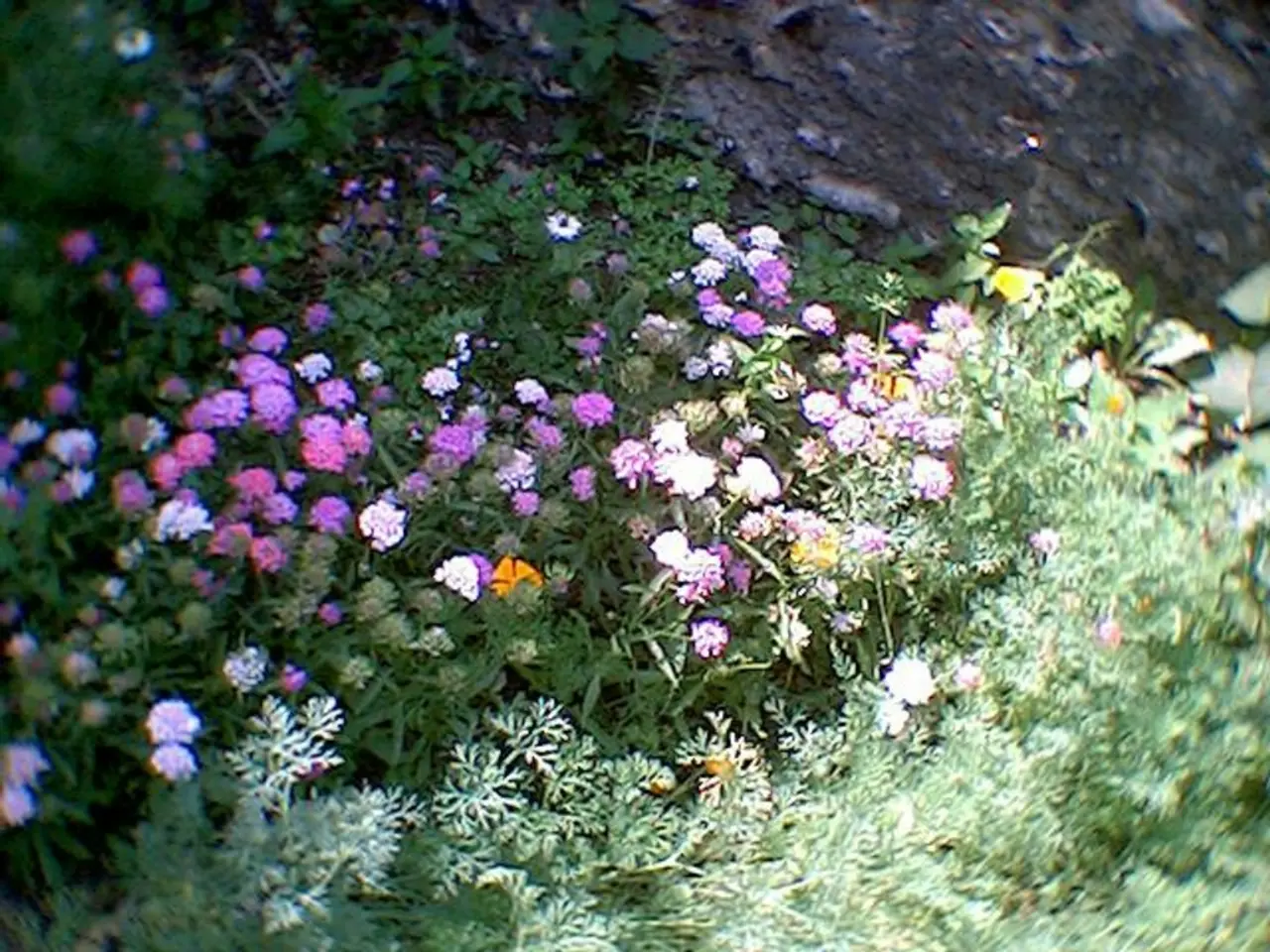Avoid Pruning These Plants After Summer: A Guide to Seven Plants Not to Cut Before Autumn
In the heart of summer, many gardeners might be tempted to tidy up their plants with a pruning shear. However, not all plants respond well to summer pruning. Here's a guide to help you navigate the dos and don'ts of pruning during the summer months.
Firstly, it's best to avoid pruning crepe myrtle, spring-flowering clematis, lilacs, oaks, and elms during summer. These plants set their flower buds shortly after blooming in spring, so pruning them in summer removes the buds and cancels next year's flower show. For instance, pruning spring-flowering clematis during summer takes away their ability to bloom again and can leave the vines flowerless next season.
Oaks and elms should be avoided due to the risk of beetles transmitting diseases like oak wilt or Dutch elm disease during the summer active period. Pruning these trees can lead to fungal infections via pruning wounds.
Roses, on the other hand, can benefit from light summer pruning to remove dead or damaged stems and encourage bushier growth. However, heavy pruning should be avoided, especially during extreme heat, to prevent stressing the plant.
Contrarily, many plants such as catmint and bee balm tolerate or benefit from summer pruning to promote rebloom and maintain healthy growth.
When it comes to shrubs like potentilla, smoke bush, and hydrangeas, their pruning schedules vary. Potentilla flowers on new wood, so it should be pruned in late winter or early spring. Smoke bush blooms wispy, smoke-like flowers in late spring and early summer. To ensure plenty of flowers, prune smoke bush in late winter or early spring. For panicle hydrangeas, do any necessary light pruning in fall, late winter, or early spring. These plants produce clusters of white flowers in summer that turn pink later, and interfering with blooms by pruning in summer should be avoided.
Rhododendron, a flowering shrub that blooms in spring, should not be pruned in summer to allow for next year's buds to set. Pruning rhododendron depends on the variety, but it is generally recommended to prune in late winter or early spring.
Butterfly bush, hardy in USDA zones 5-9, blooms profusely in summer and attracts butterflies. This plant can get a little unruly without trimming, which can be done aggressively in spring. It comes in purple, pink, white, or yellow flowers.
Oleander, an evergreen flowering shrub or small tree hardy in USDA zones 9-11, blooms throughout the year. Flowers grow on new growth for oleander, so pruning in winter will not disrupt regular blooming. It's recommended to prune oleander in late winter before new growth appears.
Crepe myrtle, a beautiful flowering tree that grows in USDA zones 7-10, also blooms on new spring growth. Therefore, it's best not to prune crepe myrtle during summer as flowers appear on new growth. Pruning crepe myrtle in summer delays blooming.
In summary, while some plants benefit from summer pruning, many woody plants and disease-prone trees should be left alone during this period to maintain blooms and healthy growth. Always research the specific needs of your plants before pruning to ensure a beautiful garden throughout the seasons.
Home-and-garden enthusiasts should be mindful of the impact summer pruning has on their plants, especially when dealing with crepe myrtle, spring-flowering clematis, lilacs, oaks, and elms, as pruning these plants during summer removes their buds and cancels next year's bloom. On the other hand, plants like catmint and bee balm tolerate or benefit from summer pruning to promote rebloom and maintain healthy growth.




